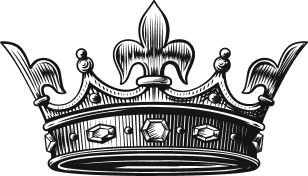Years of company growth can lead to a hodgepodge of products and services with different names—and big headaches for marcom managers.
Customers may be confused about how offerings relate to each other, or where offerings fall on a pricing scale. Even employees may not understand the hierarchy of offerings—or, more important, how to name new ones.
What’s needed is an architecture: a formal approach to organizing the names and brands in your company’s portfolio. When developed thoughtfully, a naming architecture structures all of your offerings’ names so they make sense in relation to each other. It can also help your customers find and buy more of your products and services.
Simple, but expandable
Like a well-designed house, naming architecture should be welcoming and intuitive: simple, but with room to renovate or expand to meet evolving needs. If change is required, the “house” should still remain recognizable as part of the bigger structure. In short, it should not be a two-story Colonial with Deco, Populuxe, Tudor, and Swiss Chalet features adorning it or crammed inside.
Naming architecture and brand architecture are sometimes used interchangeably, but marketing specialists (like your friends at the Content Bureau) like to use the terms precisely:
Naming architecture
A naming architecture provides a structure and rules for how and where you use names in the company’s portfolio. Those names can be simple and descriptive (such as “Shredded Wheat,” a Post Foods cereal) or fanciful and branded (like “Good Morenings,” another Post product).
Brand architecture
Brand architecture focuses on how the company’s brand (or brands) should be used in the company’s portfolio of offerings. A company might have just one brand, usually the company brand, that’s used everywhere. A good example is Oracle. The company uses very descriptive names for its offerings, but they are always preceded by the “Oracle” name.
A company might go in the opposite direction and end up with a “house of brands,” with many sub-brands underneath the company brand. Think of General Mills and its dozens and dozens of cereal brands, sub-brands, and sub-sub-brands (Honey Nut Cheerios Medley Crunch, anyone?).
Of course there’s a lot of overlap between naming architecture and brand architecture—names are part of the brand. But sometimes other elements of a brand are more recognizable than the name, such as a color (Tiffany’s trademarked robin’s egg blue) or a design element (the bulls-eye symbol for Target). The when and how of using those brand identifiers are just as important as where and why names are used.
Clean house
Aren’t sure whether you need a naming architecture or a brand architecture? To decide, begin by reviewing your brand portfolio and answering these questions:
- Do we have many trademarkable names for offerings? Are they confusing our customers and new employees?
- Are the names similar or different in style? For example, are some real words and others coined (i.e., made up)?
- Do our product managers have a tough time creating names for new offerings?
- Is our legal department frustrated with the naming process—or lack of one?
A naming architecture can help you solve these issues. It will allow you to develop a flexible yet consistent structure for housing all your names. This structure will help clarify the relationships between different brands, maximize your budget (by eliminating unnecessary proprietary names that require expensive marketing), and simplify future naming efforts.
However, if your brand portfolio …
- Centers on a single, or very few, brand names
- Relies on the strength of a “master brand” to carry the company’s message
- Employs strong elements such as color or design to enhance the brand
… then you will benefit most from a solid brand architecture. It will allow you to maximize your brand in a simple and streamlined way, while providing a clear path for future branding efforts.
To return to the house metaphor: It can be difficult to see what needs fixing in a house that you live in every day. An objective third party can provide a fresh perspective on how to refresh the look and feel of your brands—and make the structure of your portfolio stronger and more stable.


